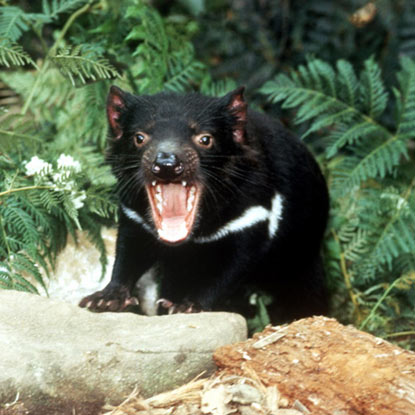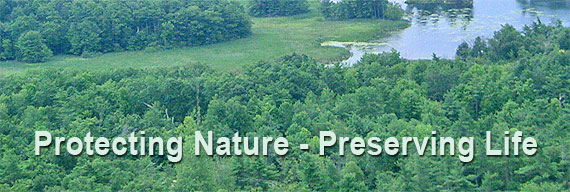|
Up Close and
Personal With Australian Wildlife
Australia is one of the most diverse countries on the planet, home
to more than one million species of plants and animals, many of which
are found nowhere else in the world.
Among the most well known of these are the
koala, the wombat,
the kangaroo, the laughing kookaburra, and the egg-laying platypus – a
creature so odd-looking that sceptical European scientists thought it
was several different animals sewn together.
Some of Australia’s unique animals and birds
are easy to spot, even
in the major capital cities. It’s not unusual to see a possum climbing
up a city lamp post in the evening, or giant fruit bats taking off from
their roosts in city parks. Pelicans, sacred ibis, colourful parrots,
and cockatoos look right at home too.
Within easy distance of every city are
several national parks and
wildlife reserves. This isn’t surprising when you consider that
Australia boasts 516 national parks, 145 marine parks, 2,700 designated
conservation areas, and 33 Indigenous Protected Areas. There are also
15 natural World Heritage Sites, ranging from the Great Barrier Reef to
the Tasmanian Wilderness.
One of the most iconic Australian animals is
the kangaroo. There are
63 species of kangaroo in Australia including different kinds of
wallabies, tree-kangaroos, wallaroos, pademelons and the quokka – a
cat-size marsupial that lives on some of the smaller islands off the
coast of Western Australia.

The Tasmanian devil is the world's largest
carnivorous marsupial.
When feeding,
a Tasmanian devil will eat everything, including bones and fur.
While some of these animals are rare or
elusive, others are quite
common. It’s not unusual to see lots of powerful red kangaroos bounding
besides your car as you travel through Australia’s Outback. You can
often easily see big grey kangaroos in native grassland beside the road
too.
In some places such as Booderee National
Park, south of Sydney -
they wander right up to you. While at Pebbly Beach, between Ulladulla
and Batemans Bay on the New South Wales south coast, kangaroos graze on
the grass edging the pristine beach and casually hop among the picnic
rugs.
One of the best places in Australia to see a
large range of animals and birds up close is Kangaroo Island,
in South Australia. While kangaroos may have given the island its name,
in the space of one day, you can easily spot koalas, wallabies,
goannas, echidnas, brush-tailed possums, and platypus. You can quickly
tick off dozens of the 270 species of bird found here, including
perhaps the rare glossy black cockatoo.
Other Kangaroo Island highlights include
watching fairy penguins
waddling home after a day out at sea, taking a swim with the Island’s
resident pods of dolphins, and walking beside hundreds of rare
Australian sealions as they laze on the sand.
While Kangaroo Island is the perfect spot
for observing koalas in
the wild, you might want to spare a thought for those that end up
needing a caring hand. The Koala Hospital
in Port Macquarie is the world’s first hospital dedicated solely to the
care and preservation of koalas.
The Hospital has a treatment room, eight
Intensive Care Units, and
multiple recovery yards. You can visit the hospital, or even take part
in the volunteer program, which has hosted people from all over the
world.
Then there’s Phillip
Island in Victoria, home to the Koala Conservation Centre.
This was set up for research and breeding purposes, and you can get
quite close to these cuddly creatures. Phillip Island is also world
famous for its Penguin Parade.
Another great place to spot koalas in the
wild is beside the Great
Ocean Road, one of the most spectacular scenic drives in Australia. You
can also see koalas in their natural habitat around Port Stephens, north of Sydney too.
Beautiful Port Stephens is also home to
resident pods of dolphins,
and several companies operate dolphin-watching tours and whale-watching
tours.
The most prolific whales in our waters are the southern
right whale and the humpback whale. These pass along the western,
southern and eastern coastlines during their annual migration. Some of
the most popular whale watching spots include Hervey Bay in Queensland,
Warrnambool in south-western Victoria, Victor Harbour in South
Australia, and Byron Bay, Eden, and Narooma in New South Wales.
From June to November you can see plenty of
humpback whales
migrating northwards along the Western Australian coastline to shelter
in Camden Sound on the Kimberley coast. They also congregate off
Broome, where the females give birth. In September you could head to
Dunsborough to see blue whales and their calves in the calm waters of
Geographe Bay.
Between early April and early July each year
marine adventurers can
try snorkelling with the world’s largest fish - the whale shark. Ningaloo Reef, on Western Australia’s Coral Coast,
is one of only a few places in the world where this is possible.
Wild dolphins are common right along the
Australian coast, and there
are plenty of opportunities to swim with them at Port Phillip Bay in
Victoria, Baird Bay on the South Australian coast, Port Stephens in New
South Wales, and at Rockingham near Perth.
One of the most famous dolphin habitats is Monkey Mia
on the shores of World Heritage-listed Shark Bay, in Western Australia.
The wild bottlenose dolphins around here have been swimming around the
ankles of tourists every day for the past forty years.
If crocodiles are more your scene then head
up to the Northern Territory to search for saltwater crocodiles in Kakadu
National Park.
Kakadu’s many habitats, which include lily-spotted wetlands and vast
plains, support more than 280 species of birds, or about one-third of
Australia’s bird species.
The most iconic of all Australia’s wildlife
sanctuaries though is the Great Barrier Reef.
Go snorkelling or diving in the tropical, clear waters and you’ll find
yourself immersed in an environment shimmering of dazzling fish,
colourful corals and sponges, dugongs, and green turtles.
Meanwhile, to get close to endangered
Tasmanian Devils, make your
way to Devils @ Cradle. At this sanctuary and breeding centre at Cradle
Mountain, in north-west Tasmania, you can get up close to plenty of
these noisy marsupial carnivores.
|













